Zimbabwe’s Iconic Attractions: Matopo Hills, Great Zimbabwe Ruins, and Victoria Falls – A Tapestry of Natural Splendor, Cultural Heritage, and Historical Significance
The Matopo Hills, situated southeast of Bulawayo, Zimbabwe, are a captivating natural and cultural phenomenon with historical importance and tourist appeal. These granite hills, shaped by erosion and weathering, are steeped in folklore and tradition, revered as sacred sites associated with the spirits of departed Ndebele chiefs. The area boasts gigantic caves adorned with Khoekhoe paintings, along with Stone and Iron Age archaeological sites.
Covering approximately 1,200 square miles, the Matopo Hills rise to an average height of 5,000 feet and feature a diverse landscape of deep valleys and fantastic rock formations. The Rhodes Matopos National Park, established in 1902, encompasses much of the area, including scenic viewpoints like the View of the World Hill.
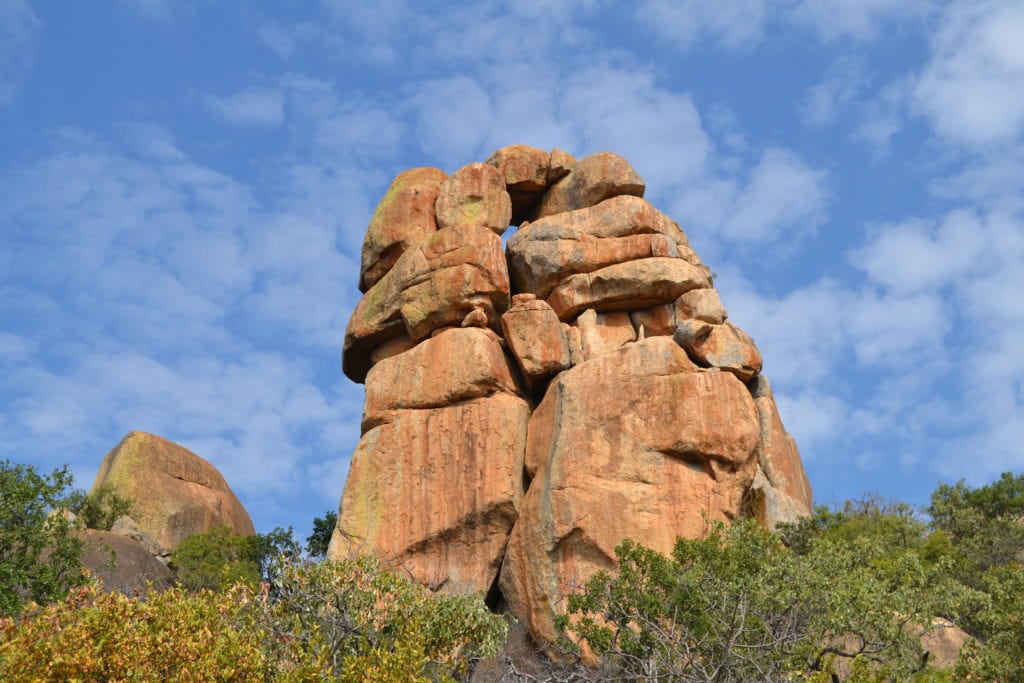
Designated as a UNESCO World Heritage Site in 2003, the Matopo Hills exhibit a wealth of rock art dating back over 13,000 years, providing insights into ancient cultures and religious beliefs. The Mwari religion, practiced in the region, considers the hills as sacred, serving as a spiritual nexus for the local community.
Despite challenges such as droughts, floods, and development pressures, efforts are underway to protect and manage the site effectively. A management committee oversees conservation efforts, guided by a comprehensive management plan aimed at preserving the area’s natural and cultural heritage while promoting sustainable development.
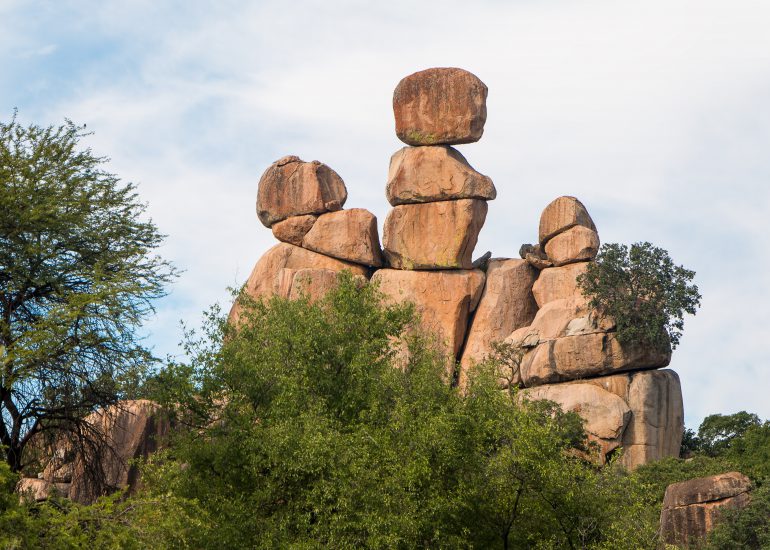
Some of the colossal granite rocks, sculpted and split by the elements over millions of years, have served as natural shelters for ancient inhabitants of the Matobo Hills. Evidence of human habitation is abundant, with traces of tools, art, houses, and other structures dating back to the early Stone Age, some 1.5 to 0.25 million years ago.
Most of the rock paintings found in the area today date back around 2,000 to 3,000 years, though some, like those in Pomongwe cave, have been dated as far back as 13,000 years. These paintings offer a glimpse into a culture and belief system that no longer exists, alongside evidence of the Iron Age humans who eventually displaced them.
Remarkably, the pigments used by the San people for their creations have endured the test of time, preserving the artwork in surprising clarity.
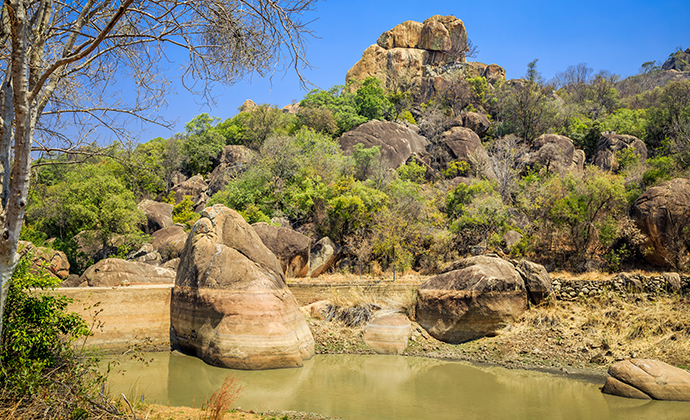
The Matobo Hills exude a spiritual aura, blending scenic beauty, wildlife, and rich cultural and historical significance. Legends abound, from the burial site of Mzilikazi to Cecil Rhodes’ resting place at “The View of the World.” Today, several shrines are still active, hosting ancient rituals like rainmaking ceremonies, drawing people from across Zimbabwe and beyond.
For visitors, the dry season (June to October) offers prime wildlife viewing opportunities, with animals congregating around water sources. However, the hills’ allure persists year-round, with breathtaking scenery and diverse activities, including hiking, birdwatching, and cultural tours.
Access to the Matobo Hills National Park is available through various entrances, with accommodation options ranging from self-catering lodges to upmarket resorts.
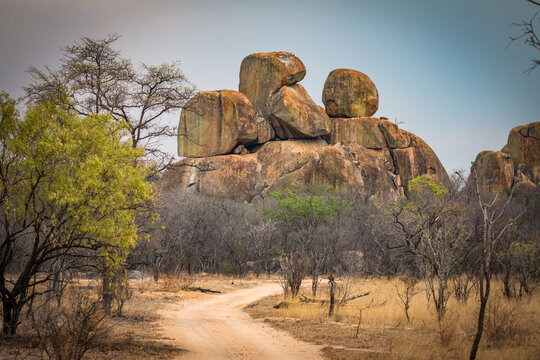
Things to do
• This is a game park and game drives are possible from the nearby lodges, or for self-drivers staying within the park. Species of animals that can be seen include black and white rhino, leopard, impala, sable antelope, zebra, giraffe, wildebeest, monkeys, chacma baboon, hippo and ostrich.
• The scenery with it’s amazing balancing rock formations are worthy of any visitor in love with nature.
• The famous and numerous rock paintings are a major attraction in the park.
• A visit to the final resting place of Cecil John Rhodes.
• Bird watching in the park – with high concentrations of birds of prey, including the world’s highest concentration of black eagles, is sure to excite the birding enthusiast.
• The area is great for hiking and walking safaris since there are no elephants or very many predators. Mountain biking is also an option.
• Culture is an important part of this World Heritage site, and a visit to a local Ndebele village is an absolute must-do activity.
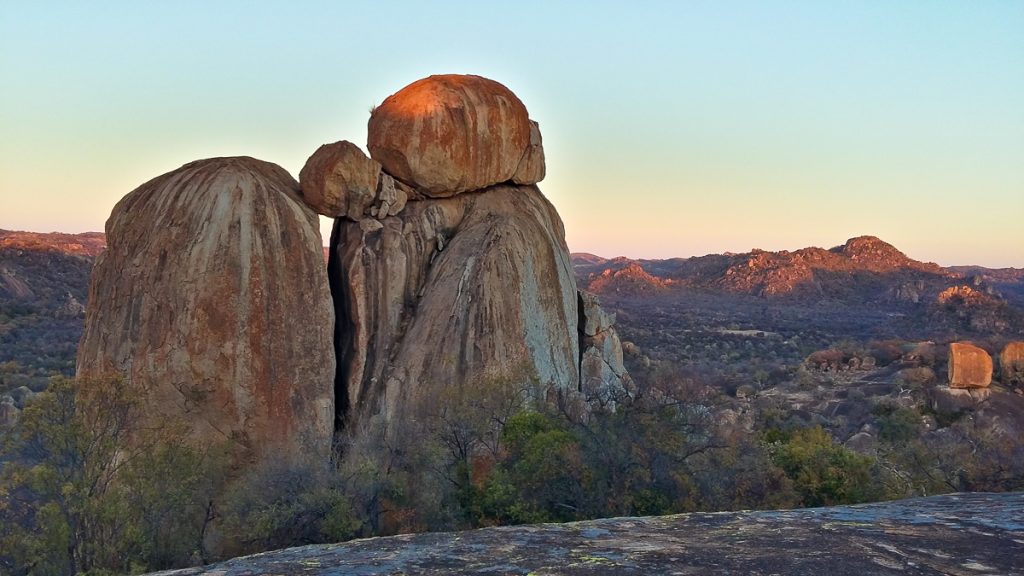
• The history and culture of the area is fascinating and a tour or talk by Paul Hubbard, a local expert on the area, is highly recommended
In summary, the Matopo Hills stand as a testament to Zimbabwe’s rich history and cultural heritage, attracting visitors with their awe-inspiring landscapes, ancient rock art, and spiritual significance.
Discover Great Zimbabwe: Historical Heritage and Educational Value.
Great Zimbabwe, situated in southeastern Zimbabwe near Masvingo, is an expansive complex of stone ruins dating back to the African Iron Age. Covering approximately 200 acres, it stands as the largest among over 150 similar ruins scattered across Zimbabwe and Mozambique.
The ruins of Great Zimbabwe served as the heart of a bustling trading empire from the 11th to the 15th centuries, with a population estimated between 10,000 to 20,000 people. The city’s economy thrived on cattle husbandry, crop cultivation, and the trade of gold along the Indian Ocean coast.

Consisting of three main areas—the Hill Complex, the Great Enclosure, and the Valley Ruins—the site showcases remarkable mortarless stone construction. The Hill Complex, considered the spiritual and religious center, features massive stone walls and remnants of daga houses.
South of the Hill Complex lies the Great Enclosure, the largest single ancient structure in sub-Saharan Africa. Enclosed by towering walls, it includes a mysterious Conical Tower, the purpose of which remains unknown.

Great Zimbabwe was largely abandoned in the 15th century, with its decline leading to the transfer of stoneworking techniques to other regions. Although Portuguese explorers likely encountered the ruins in the 16th century, it was not until the late 19th century that they garnered archaeological attention.
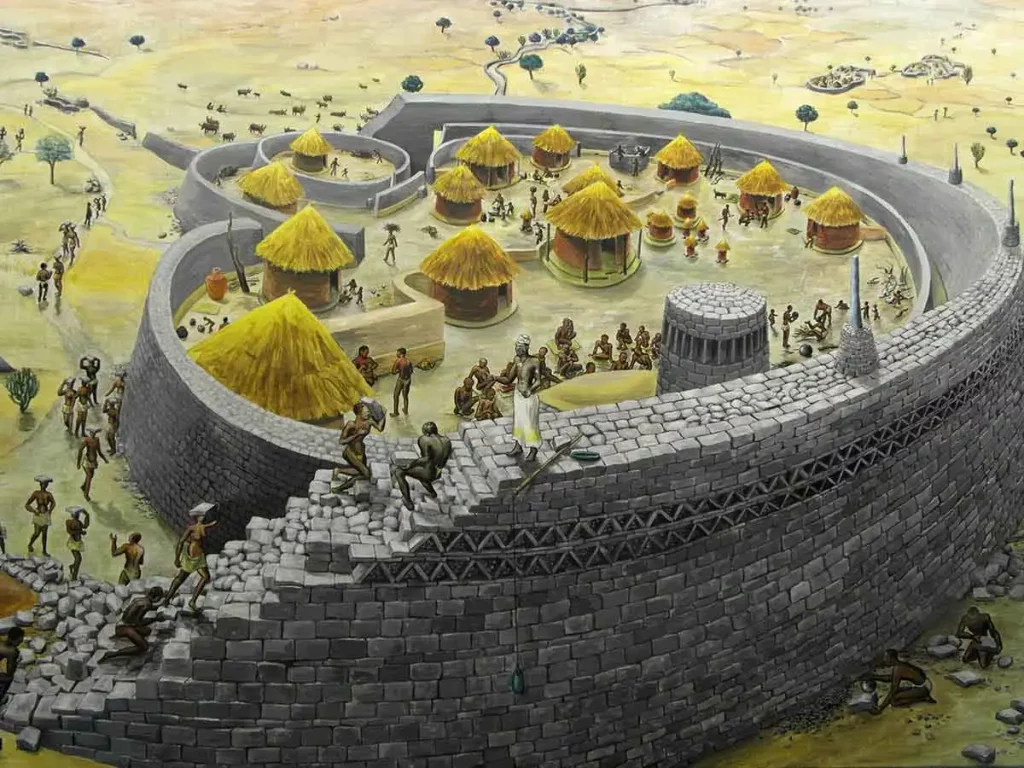
European explorers initially attributed the ruins to ancient civilizations like the Phoenicians or Greeks due to their sophisticated construction. However, subsequent research confirmed their African origin. The soapstone bird sculptures found within the ruins, now national symbols of Zimbabwe, provide insight into the site’s religious practices.
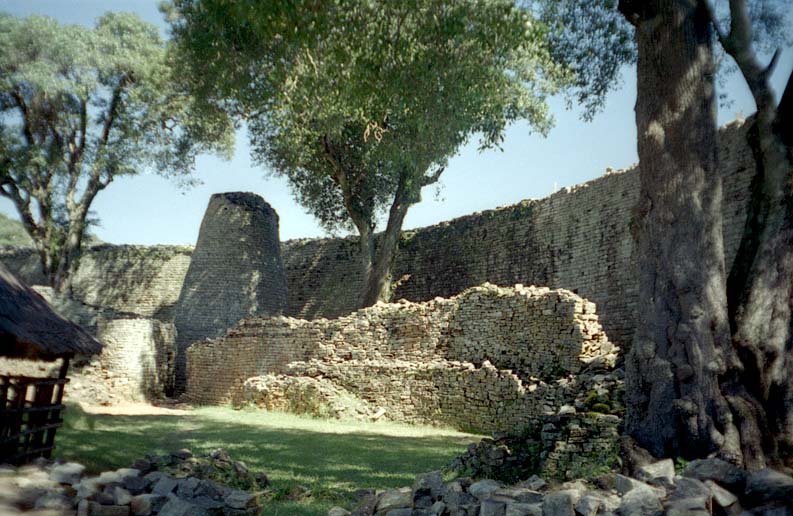
Great Zimbabwe holds significant historical importance and serves as a captivating tourist attraction for several reasons:
- Historical Significance: Great Zimbabwe represents a remarkable feat of ancient African architecture and engineering, showcasing the ingenuity and skill of its builders during the African Iron Age. It was the center of a thriving trading empire, demonstrating the economic and cultural prowess of its inhabitants.
- Cultural Heritage: The ruins of Great Zimbabwe provide valuable insights into the socio-cultural practices, religious beliefs, and daily life of its past inhabitants. The site offers a window into the rich history and heritage of the Shona people, who once inhabited the area.
- Archaeological Interest: Archaeological research conducted at Great Zimbabwe has contributed to our understanding of pre-colonial African civilizations and their interactions with other regions. The site has yielded artifacts and structures that shed light on ancient trade networks, craftsmanship, and social organization.
- UNESCO World Heritage Site: Designated as a UNESCO World Heritage Site in 1986, Great Zimbabwe is recognized globally for its cultural and historical significance. Its preservation and conservation are of international importance, ensuring that future generations can continue to appreciate its heritage.
- Tourist Attraction: Great Zimbabwe attracts visitors from around the world who are drawn to its awe-inspiring ruins, intriguing mysteries, and scenic surroundings. Tourists can explore the Hill Complex, the Great Enclosure, and the Valley Ruins, immersing themselves in the site’s rich history and archaeological wonders.
- Educational Value: Visiting Great Zimbabwe offers educational opportunities for visitors to learn about African history, archaeology, and cultural heritage. Guided tours, museum exhibits, and interpretive signage provide valuable insights into the significance of the site and its relevance to broader historical narratives.
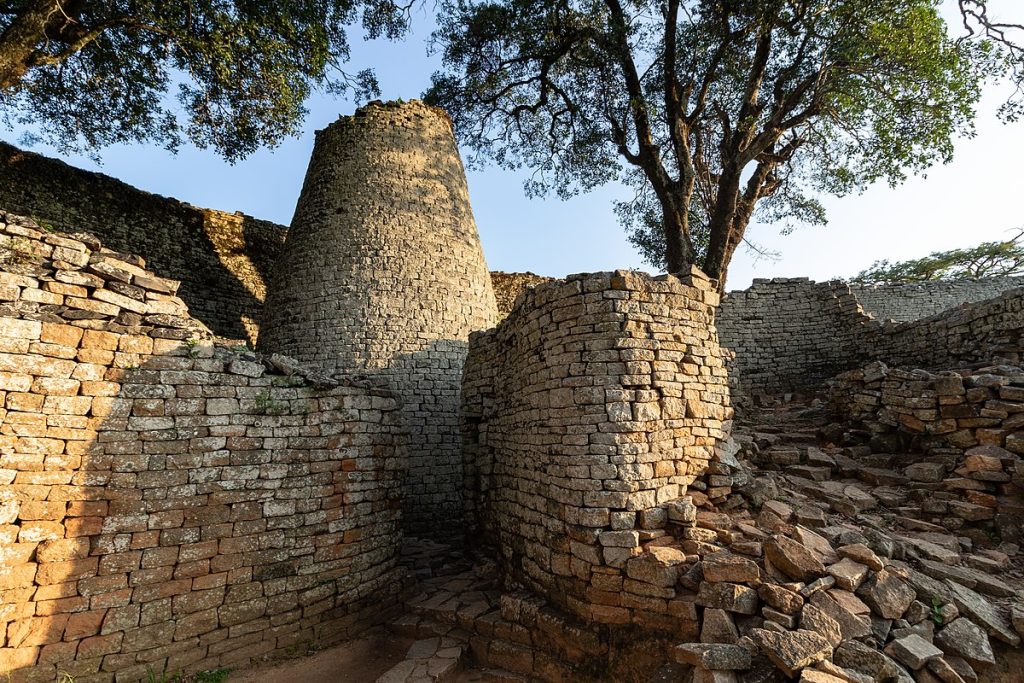
Overall, Great Zimbabwe’s historical importance and tourist attraction status make it a must-visit destination for anyone interested in exploring Africa’s rich cultural heritage and ancient civilizations
Victoria Falls: Zimbabwe’s Natural Wonder & 12 Amazing Facts
Victoria Falls, known as Mosi-oa-Tunya in Lozi and Shungu Namutitima in Tonga, is a majestic waterfall located on the Zambezi River in southern Africa. Serving as a habitat for diverse plant and animal species, it straddles the border between Zambia and Zimbabwe and ranks among the world’s largest waterfalls, boasting a width of 1,708 meters.
Discovered by Scottish missionary David Livingstone in 1855, Victoria Falls holds historical significance, with Livingstone naming it after Queen Victoria. Despite its colonial moniker, the falls retain their indigenous names, Mosi-oa-Tunya and Shungu Namutitima, both recognized by the World Heritage List.
While not the tallest or widest waterfall globally, Victoria Falls earns its distinction as the largest based on its combined width and height, surpassing even North America’s Niagara Falls. Formed by the Zambezi River’s plunge into a transverse chasm, the falls’ sheer magnitude captivates visitors from around the world.
The Zambezi River experiences a distinct rainy season from late November to early April, leading to an annual flood season from February to May. During this time, the falls unleash a powerful spray that can rise over 400 meters high, visible from up to 50 kilometers away. Visitors can witness a mesmerizing “moonbow” in the spray during full moon nights.
As the dry season sets in, the islets on the crest of the falls expand, revealing more of the rocky face and allowing adventurous explorers to walk across certain stretches of the river. However, the falls’ flow varies significantly throughout the year, with the lowest flow occurring in November.
Recent research suggests that climate change may impact precipitation variability at Victoria Falls, potentially altering its character in the future. Despite these changes, Victoria Falls continues to enchant visitors with its natural beauty and remains a cherished landmark in Africa’s landscape.
Here are twelve fascinating facts about this remarkable wonder that may surprise you or inspire you to experience it firsthand.
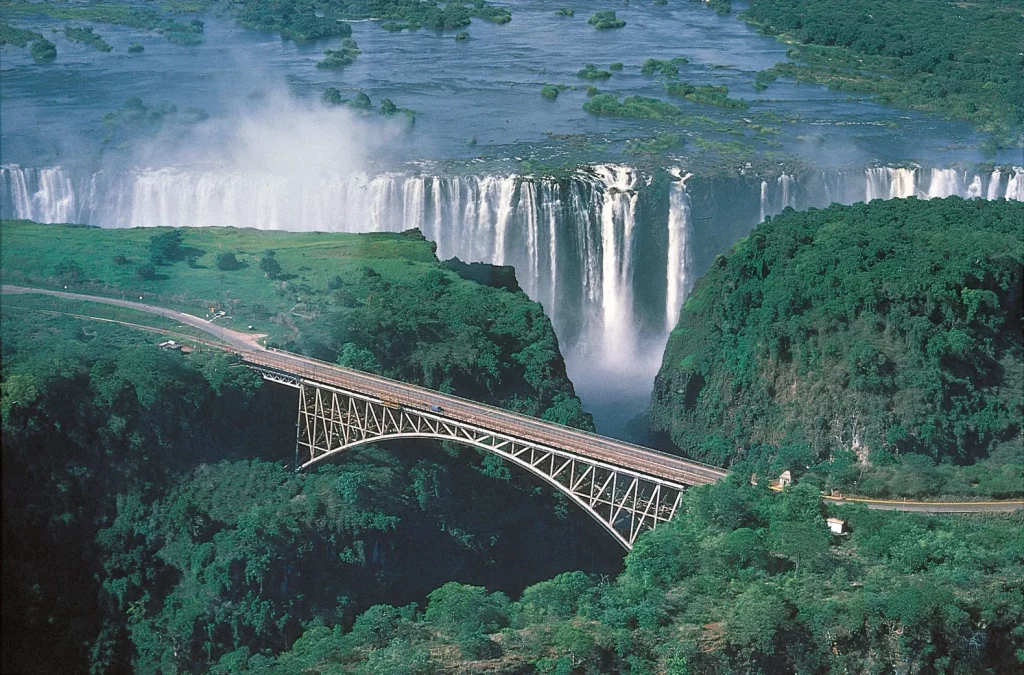
- Largest Waterfall in the World: While Victoria Falls may not be the widest or highest waterfall globally, it holds the title of the largest sheet of falling water on the planet. Standing at 108 meters tall and stretching 1708 meters wide, it dwarfs North America’s Niagara Falls and rivals South America’s Iguazu Falls.
- Part of the Zambezi River: Victoria Falls is an integral part of the Zambezi River, the fourth-largest river in Africa. Spanning across six nations, the Zambezi River’s journey covers an impressive 2,700 kilometers, offering opportunities for wildlife viewing and various activities.
- Located within Two National Parks: Victoria Falls lies within both Mosi-Oa-Tunya National Park and Victoria Falls National Park. The former, a UNESCO World Heritage Site, derives its name, “the smoke that thunders,” from the awe-inspiring spectacle of the falls.
- Named by David Livingstone: British explorer David Livingstone bestowed the English name “Victoria Falls” in 1855, in honor of Queen Victoria. Despite the trend of reverting to indigenous names, the local community has maintained the name out of respect for Livingstone.
- Visible from Two Countries: Visitors can admire Victoria Falls from both Zimbabwe and Zambia, with 75% of the falls visible from the Zimbabwean side and the remaining 25% from Zambia. Despite recent negative media attention, Zimbabwe remains a safe and preferred viewing destination for many.
- One of the World’s Seven Natural Wonders: Victoria Falls holds a prestigious position among the Seven Natural Wonders of the World, alongside iconic landmarks such as the Grand Canyon and the Great Barrier Reef.
- Features Several Gorges: The falls boast several principal gorges, including the First, Second, Third, Fourth, and Fifth gorges, as well as the Songwe Gorge, named after the Songwe River.
- Massive Water Flow: An astonishing 500 million liters of water cascade over Victoria Falls every minute, equivalent to the volume of 200 Olympic-sized swimming pools. The flow rate reaches an impressive 1088 cubic meters per second.
- Moonbows: Victoria Falls creates a unique natural phenomenon known as “moonbows,” or lunar rainbows, visible when the light of the full moon interacts with the falls, providing a breathtaking spectacle.
- Constant Rainfall: The Victoria Falls Rainforest on the Zimbabwean side receives rainfall every day of the year, making it the only place on earth with such consistent precipitation. The lush greenery it sustains adds to the area’s allure.
- Swim to the Edge: Adventurous travelers can swim to the edge of the falls at Devil’s Pool, experiencing an exhilarating sensation akin to being in the world’s best infinity pool. This daring activity is only possible during low water levels, typically from September to December.
- Abundant Wildlife: Victoria Falls is home to a diverse array of wildlife, including many of Africa’s iconic “Big Five.” Visitors should exercise caution, especially regarding the presence of crocodiles in the region, and heed the guidance of local guides for a safe and memorable experience.
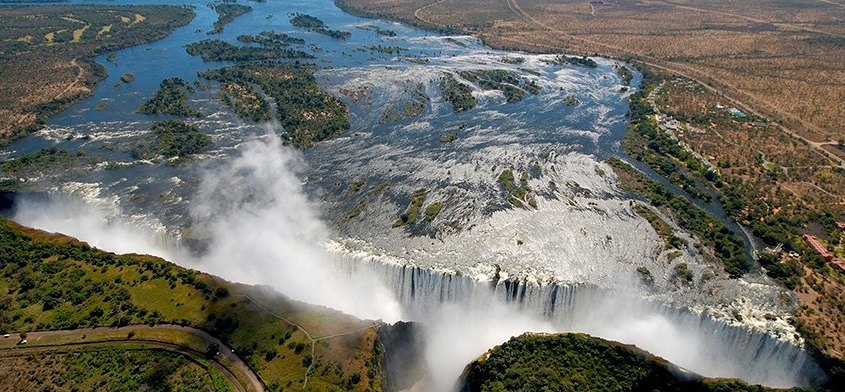
Victoria Falls truly offers a blend of natural beauty, adventure, and wildlife encounters, making it a must-visit destination for travelers seeking unforgettable experiences in Africa’s heartland.
Related Reading Discover Zimbabwe’s Cultural Treasures: Italian Chapel of St. Francis, Ziwa National Monument, and Murehwa Cave
